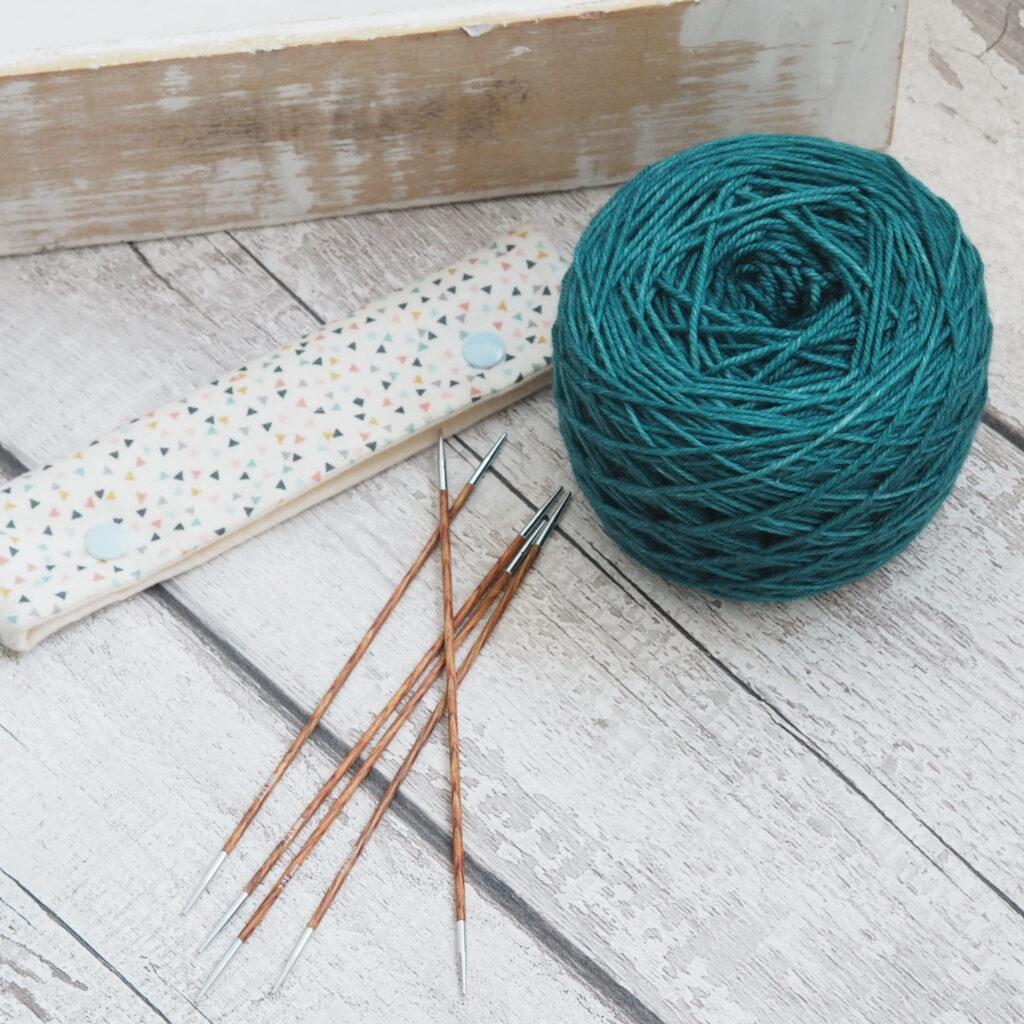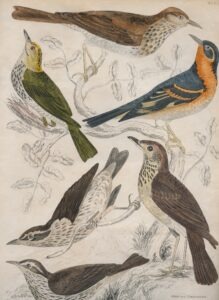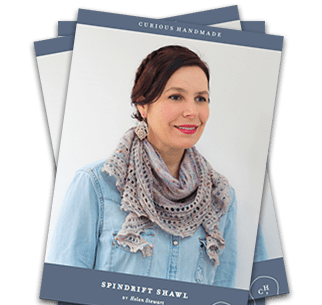In the run up to our first season of The Handmade Sock Society, I decided to put together an email series to encourage new or hesitant sock knitters who want to challenge themselves to knit their own socks. There was such a lovely response to the emails that I republished them here on the blog, so that anyone thinking about taking the plunge into sock knitting can use them!
I know newish knitters can sometimes find the idea of socks daunting. Socks have a somewhat fearsome reputation, but once you’ve knit your first pair, I bet you’ll wonder what all the fuss was about. These are some of the hints, tips, tricks and techniques I’ve found most helpful in my own sock knitting journey.
Choosing yarn for socks
With any type of project, yarn choice plays an enormous role in how the finished object fits, looks, and performs over time. When it comes to picking out yarn for socks, there are some particular qualities to look out for and some things to avoid so that your lovingly handmade socks spend more time on your feet than at the back of the drawer.
Fit and comfort
A sock‘s fit is largely determined by the design of the pattern and your knitting gauge, but fibre and yarn type choice can make a significant difference. Socks get stretched and pulled a lot more than other handknits every time they are pulled onto a pair of feet, which means that you need a yarn that is bouncy and resilient by nature. An elastic, springy yarn will help your socks keep their shape, which is important because saggy socks are no fun.
-Yarn weight: The weight of your sock yarn is usually determined by the pattern, and it has a large impact on how a pair of socks will fit. There’s a reason that finer yarns are popular for this purpose: handknit socks are much thicker and bulkier than store bought socks. Heavier weight yarns can be great for bed socks, boot socks, and kicking around the house, but just remember that they require a lot more shoe real estate.
– Fibre: Natural fibres such as wool tend to have the best memory and will spring back into shape, which makes them an excellent base for sock knitting. Anything with a lot of drape, however, like cotton, bamboo, or silk, can end up droopy after a few wears. For socks, I would avoid yarns with more than 10% or 15% of any of these fibres.
– Spin: The way a yarn is spun can also affect the way it will behave. Tightly spun yarn with a high twist can also add structure to a sock, helping it keep its shape even with heavy wear.
Durability and ease of care
Unlike a shawl or even a cardigan, socks need to withstand a lot of friction and a lot of washing. That can be a tall order for handknits. Once again, the fibre of your sock yarn and the way it is spun can have an effect. We’ve mentioned that wool makes a brilliant sock yarn, but 100% wool has its drawbacks. After a day stuffed into a warm shoe, pure wool yarns can end up felting. The same felting friction can also cause holes to develop in wool socks, particularly in the heels and toes. While it’s a hundred times easier to darn a handmade sock than a store bought sock, we want that to be a last resort. So what can we do to chose yarn that will stand up to the demands of the sock life?
– Wool type: There is a lot of variation in wool types from different breeds. Sometimes there’s a compromise to be made between softness and strength. Abrasion can be tough on soft wool, causing pilling and holes in your socks. The super-soft merino we cherish for scarves and other accessories which sit close to the delicate skin on our necks and faces isn’t the hardest-wearing fibre. Good news: the skin on our feet is a lot less sensitive, and often the harsher, more rustic yarns you couldn’t use for other projects are perfectly comfy in socks.
– Spin and ply: As mentioned before, a tightly spun yarn has more structure, and makes for a sturdier sock. More plies also mean more strength. You should probably stay away from lofty single ply yarns for all but the most decorative of baby booties.
– Blends: Designated sock yarns are usually a blend designed for a good balance of comfort and durability. Usually, the secret ingredient is a man-made fibre like nylon or polyamide, at anywhere between 10% and 25%. If you choose a yarn without a “strength” fiber like this, you can consider knitting thin nylon thread doubled with your yarn in the heels and toes of your sock. Mohair blends are a lovely natural alternative for anyone trying to avoid nylon content.
– Superwash: Socks need a lot of washing. There is a lot of conversation these days about superwash wool vs fibre-conscious alternatives, and it’s a decision each knitter needs to make on their own. But many if not most commercial sock yarns are made with superwash yarn. Even if you do choose a superwash yarn, most handknits are still better off with a hand wash. A drying rack full of handmade socks is really a delightful sight!
Colour
Socks offer an amazing opportunity to branch out and explore shades and colourways that you might never choose for a garment. One skein is usually a low-stakes investment, which explains why so many of us have stashes full of single skeins of vivid, beautiful sock yarn. Colour is such an individual choice, but there are a few rules of thumb I keep in mind when choosing yarn for socks.
– Pale, light colours can show dirt and stains more quickly, which is something to keep in mind if you’re knitting boot socks for heavy hiking wear vs fancy special occasion anklets.
– Dark colours hide dirt, but they can also hide delicate stitch patterns and cables.
– Variegated yarns can also obscure fancy stitches, and may show some pooling or flashing of colours. Again, socks are one place it’s easy to go a little crazy, so experimenting with some really out-there variegation can be a lot of fun.
– Self striping yarn can be very motivating as you watch the colors change row by row, even on simple socks! They type of heel you do on your sock will have an impact on the striping action.
– I love speckles for socks right now: they really are the best of all worlds. The specks camouflage flecks of dirt while the lighter colours let the stitch work shine.
So there you go! That’s everything you need to know about picking out sock yarn! I hope that was helpful. Next time, I’ll walk you through some of the most popular cast on methods I know for socks.
Happy sock knitting!
Part 2 of The Sock Series: Needles
Part 3 of The Sock Series: Casting On
Part 4 of The Sock Series: Avoiding Holes in the Gusset
Part 5 of The Sock Series: Closing the Toes





